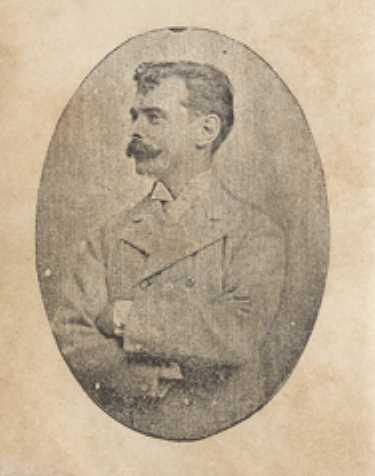4.2.1 The narrative work of Álvaro de la Iglesia (1859 – 1940)

Álvaro de la Iglesia, although born in La Coruña, Spain, moved to Cuba during the war for independence in 1874 and began his literary career on the island, inspired by its natural and social environment for the writing of many of his texts. He published his first works in the weekly magazine “El Álbum” in the province of Matanzas, the city where he settled after his arrival in Cuba.
Although he truly established himself as a writer after the establishment of the Republic, he carried out quite an active creative activity in the period leading up to it; in 1894, he published the novel “Adoración,” which was well received by literary scholars of the time. Even Enrique José Varona, after its reissue in 1901, would say: “The author of Adoración knows how to paint; even more, he knows how to move.”
His pro-independence affiliation is evident with the publication of “Episodios Cubanos. Cuba para los cubanos” (Cuban Episodes. Cuba for Cubans), a political pamphlet with radical overtones, surprising for having been written by a Spaniard and for his patriotic identification with the island, as well as an early anti-annexationist sentiment that would take time to germinate in the minds of most Cubans.
In 1901, Álvaro de la Iglesia published a volume of “Stories.” The pieces contained within are not particularly striking, with some offering a flavor somewhere between testimonial and anecdotal, appreciated as a reflection of Cuban identity. These include “The Two Emissaries” and “The Little Patriot,” set in the bushes that were subjected to the ravages of the war during the 1995 War.
“The Witch of Atarés or the Bandits of Havana” was also published in 1901, launching a literature of customs inherited from that developed in the 19th century. Also that year, it appeared in “El Fígaro” and “La misa del gallo” (The Rooster’s Mass), imbued with this same tone that would achieve a certain stylistic definition in his three volumes of “Cuban Traditions,” published in 1911, 1915, and 1917.
He also published “Historical Stories and Portraits, Old Paintings” in 1915, which displayed a romantic-inspired patriotism, far removed from the innovative zeal that was taking shape at the time; along the same lines was “Things of Yesteryear,” published in 1918. His work “Saint Christopher, Patron Saint of Havana” dates from 1919, in which he demonstrates his interest in the island’s cultural heritage.
His texts appeared in numerous publications during the colonial and republican periods. He was a member of the Cuban Academy of History and signed several texts under the pseudonyms Pedro Madruga, Eligio Aldao y Varela, Artemio, and Vetusto.








